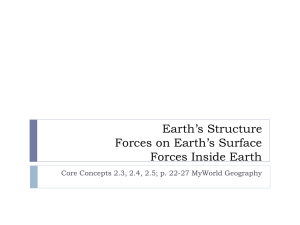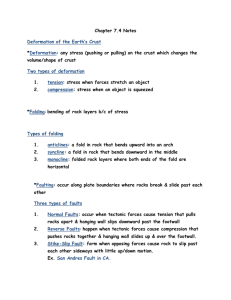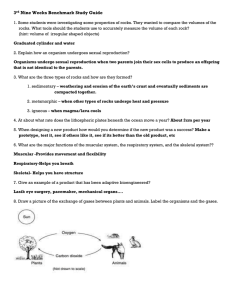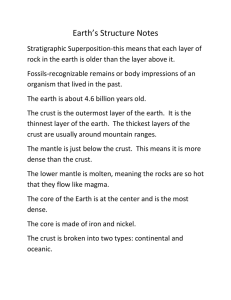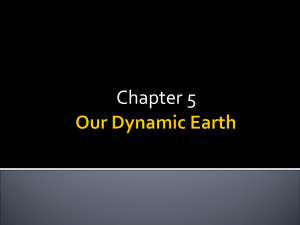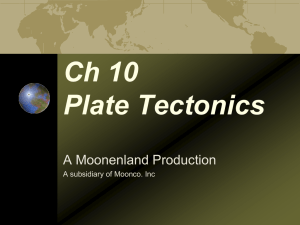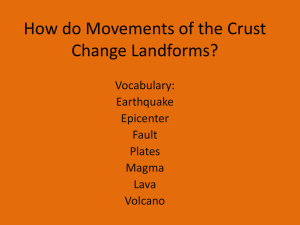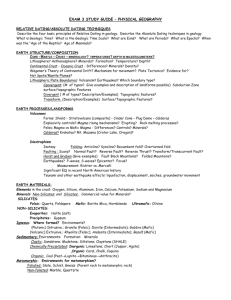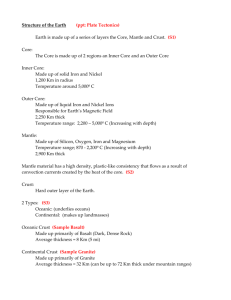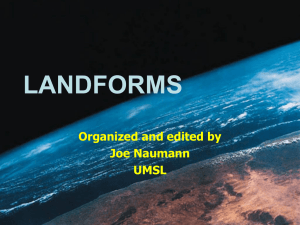Review-notes-Unit-2
advertisement
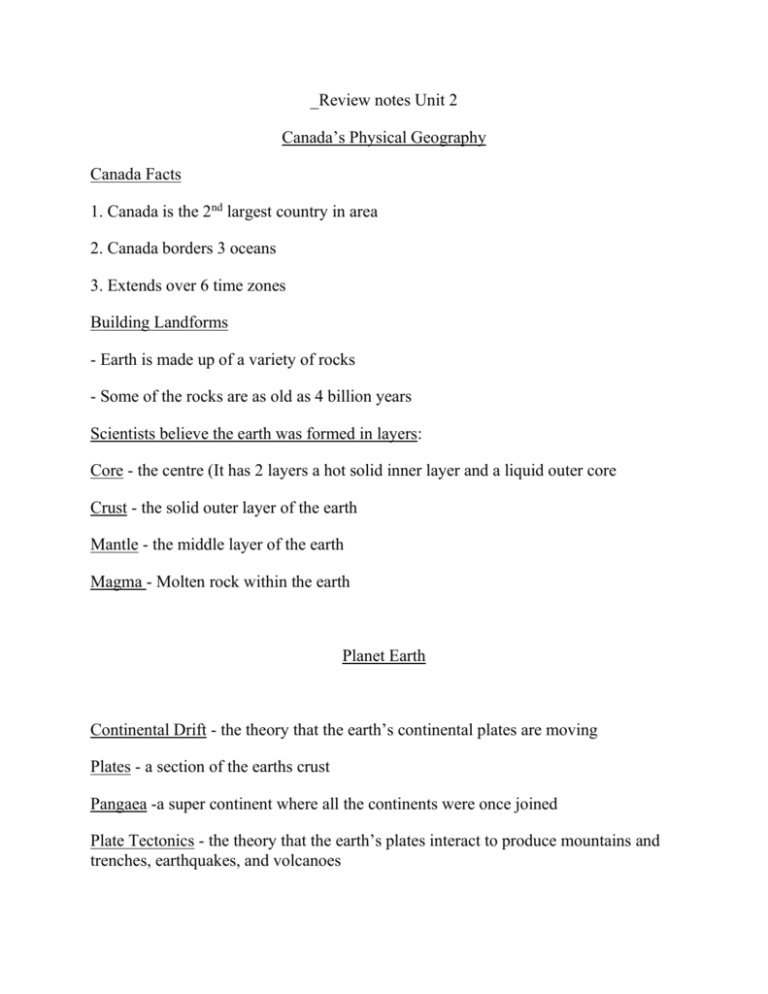
_Review notes Unit 2 Canada’s Physical Geography Canada Facts 1. Canada is the 2nd largest country in area 2. Canada borders 3 oceans 3. Extends over 6 time zones Building Landforms - Earth is made up of a variety of rocks - Some of the rocks are as old as 4 billion years Scientists believe the earth was formed in layers: Core - the centre (It has 2 layers a hot solid inner layer and a liquid outer core Crust - the solid outer layer of the earth Mantle - the middle layer of the earth Magma - Molten rock within the earth Planet Earth Continental Drift - the theory that the earth’s continental plates are moving Plates - a section of the earths crust Pangaea -a super continent where all the continents were once joined Plate Tectonics - the theory that the earth’s plates interact to produce mountains and trenches, earthquakes, and volcanoes Subduction zone - an area of the earth’s crust where one plate slides beneath another Alfred Wegener’s was a German Scientist who believed that all the Earth’s Continents were once joined together in one supercontinent, he called Pangaea Evidence of Alfred Wegener’s Theory - the fit of the land masses - presence of similar fossils in rocks separated by an ocean - Matching rocks on the either side of the Atlantic - Fossils of sea animals have been found high in the rocks of the Himalayas What are Landforms? Topography - The natural features of the earth’s surface Landscape - the shape of the land together with its cover of vegetation, water, ice, and rock How can Landscape Effect People’s Lives 1) what they eat 2) how they earn a living 3) who they do business with 4) other factors of their daily life Topography can described using the following 1) Elevation - height of the land form measured from sea level 2) Relief - is the difference in elevation between points on the Earth’s surface 3) Gradient - refers to the steepness of slopes 4) Geology - refers to the types of rocks and the history of those rocks 5) General Appearance - the general look of the area How are Landforms Built 1) The heat of the earth’s interior creates convection currents in the mantle 2) Causing Magma in the mantle to break through the crust as lava or volcanic ash 3) Moving Magma cause plates to separate or collide, moving the crust to cause mountains or trenches, or valleys How are Land Forms Shaped Topography is a result of 4 Forces 1) Mountain building - forces up 2) Weathering - wearing down from the exposure to atmosphere 3) Erosion - wearing down forces 4) Deposition - building up, eroded materials add new shape Geological Facts of Earth 1) More than 4.5 billion years old 2) Some areas have been covered by glaciers and had tropical heat at other times Canada’s Landform Regions Landforms regions are based on Characteristics of: 1) age of rock 2) type of rock 3) relief 4) gradient 5) process that has shaped the area 8 Major Landfrom Regions of Canada 1) Canadian Shield - is a big area that has the oldest rock in Canada, it has (podzols thin acidic soil) not good for Agriculture. Covers most of Central Canada, parts of Saskatchewan, Manitoba, Ontario, Quebec, Labrador, NWT, and Nunavut 2) Appalachian Mountains - most of Atlantic Canada 3) Western Cordillera - a series of parallel mountain ranges the Coast, Columbia, and Rocky Mountains. Parts are in BC, Yukon, and Alberta 4) Innuitian Mountains - Mountain areas of the Far North. Too cold for trees to survive 5) Arctic Lowlands - lowland areas with little vegetation near the areas of Nunavut. 6) Interior Plains - Contains good soil for growing wheat. Covers most of Alberta, Saskatchewan, Manitoba, NWT 7) Great Lakes- St. Lawrence Lowlands - areas with fertile soil. Includes parts of Ontario and Quebec. 8) Hudson Bay Lowlands - low areas with lots of water and poor drainage. Located in Northern Ontario and Manitoba. Climate and Weather - p.31-34 Climate - The average conditions of the atmosphere over a long period of time. Weather - is the day to day conditions in the atmosphere Factors that Effect Climate 1) Latitude - how close the land is to the equator 2) Air Masses and Wind - different types of air masses have different qualities, and these air masses can change the weather and the climate 3) Ocean Currents - Air passing over an ocean current is effected by he water below. 4) Altitude - the height of land above sea level. Air temperature drops as altitude increases. The higher you go up the colder. 5) Bodies of Water- land water cools and heats slower than area, and surrounding areas can be effected by the difference between the air temperature and the water temperature. 6) Mountain Ranges - when winds carrying moisture hit the mountains they rise and cool. Climate Region - an area that experiences similar weather conditions within its boundaries throughout the year. Koppen’s Climate Types: a) Tropical b) Dry c) Warm d) Cool e) Polar
